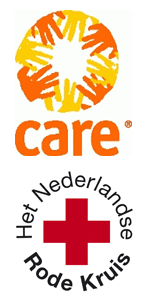Difference between revisions of "Resilient WASH systems in drought-prone areas"
| Line 17: | Line 17: | ||
* [[Increasing availability of water over space|Improving the availability of water over space]] (more points of water increase access for people and livestock). | * [[Increasing availability of water over space|Improving the availability of water over space]] (more points of water increase access for people and livestock). | ||
* [[Increasing availability of water over time|Improving the availability of water over time]] (more water available to last the entire dry season, or with agriculture, short dry spells). | * [[Increasing availability of water over time|Improving the availability of water over time]] (more water available to last the entire dry season, or with agriculture, short dry spells). | ||
| − | * Improving techniques that influence water demand, such as | + | * Improving techniques that influence water demand, such as water-saving technologies, irrigation practices, re-use techniques and drought-resistant crops. |
====Non-technical measures==== | ====Non-technical measures==== | ||
Revision as of 17:35, 14 June 2012

Resilient WASH systems need to be able to cope with changes in the availability of water. This section explores which techniques can be used to improve water availability over space and time in areas not only prone to drought and changing climate variability, but also those areas with deteriorating water availability due to increasing water demands and human influences. The focus is on water supply and non-motorized irrigation in rural areas for populations of up to 5,000 people. Resilience is a concept used to describe how to make water systems more robust in terms of water availability, thereby reducing the vulnerability of people that rely on them.
Main content
- Impact of drought on WASH systems - Includes world maps on the locations of water stress, scarcity, and historical drought.
- Drought and links to other disasters - How drought is linked to other major disasters such as poverty, inequality, and conflict.
- Drought resilience, non-technical solutions - Non-technical ways to make water systems more resilient, such as financial, institutional, environmental and social measures.
- Drought resilience, technical solutions - Technical solutions to make water systems more resilient.
- Drought cycle management - Four stages of drought management: normal, alert, emergency, recovery.
- Framework for evaluation of projects in drought-prone areas - a set of questions to help evaluate projects.
Both technical and non-technical components are important in discussing how to make water systems resilient. In many cases, it is not technical issues which cause projects to become unsustainable, but non-technical issues such as management, social relationships and community dynamics. A useful model to use is the FIETS model, which covers five dimensions of sustainability: Financial, Institutional, Environmental, Technical, and Social.
Technical measures
The technical measures to consider while planning a project can be divided into three types:
- Improving the availability of water over space (more points of water increase access for people and livestock).
- Improving the availability of water over time (more water available to last the entire dry season, or with agriculture, short dry spells).
- Improving techniques that influence water demand, such as water-saving technologies, irrigation practices, re-use techniques and drought-resistant crops.
Non-technical measures
- Financial & economic solutions - e.g. availability of micro-finance to users to replicate technology
- Institutional solutions - e.g. establishment of effective water user associations to manage communal facilities
- Environmental solutions - e.g. siting of seasonal water points in relation to pasture availability in pastoral areas
- Social solutions - e.g. changing behavior in water use, use of communal sources, etc.
